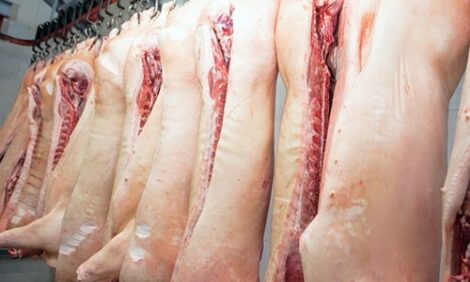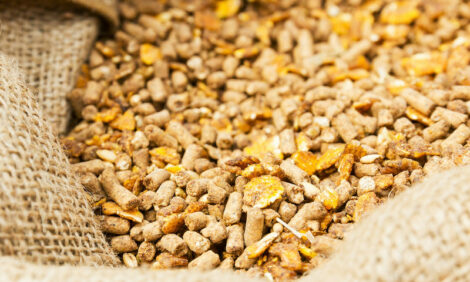



Group Housing Study Shows Management is Key to Productivity
CANADA - Farm-Scape: Episode 1201. Farm-Scape is a Wonderworks Canada production and is distributed courtesy of Manitoba Pork Council and Sask Pork.  Farm-Scape is sponsored by
Manitoba Pork Council and Sask Pork  Play Audio Play AudioFarm-Scape is a Wonderworks Canada production and is distributed courtesy of Manitoba Pork Council and Sask Pork. |
Farm-Scape, Episode 1201
Research at the Prairie Swine Centre in Saskatoon shows sows housed in groups can be just as productive as those housed in stalls but management is key.Scientists at the Prairie Swine Centre are comparing the performance of sows housed in groups using two different management systems.
Both approaches utilize electronic feeding to monitor and control feed intake but one group of sows remains static throughout the gestation period while new sows are added about four times through the gestation period to the second group.
Research Scientist in Ethology Dr. Harold Gonyou says productivity in a group housing system can be as good as in a stall system but management is critical.
"In this particular study, we've run the animals through one reproductive cycle at this point. All of our animals have farrowed once and we have them varying in parity from gilts through to fourth and fifth parity animals.
The overall performance is acceptable in all the systems. We're seeing some differences depending on the age of the animal. Older animals are doing better in the group housing. The younger animals are doing a little bit better in stalls. We're not finding a big difference between what we call a static and a dynamic system in terms of performance.
The productivity on these can be just as good as what you'd have in a stalled system but you have to identify where your weaknesses are and that's what we're trying to do. We're trying to identify where our challenges are, then we're modifying things to try to improve that."
Dr. Gonyou says there were some initial challenges in terms of organizing and creating the necessary patterns of herd movement but things are working well now.
He says scientists will be taking the animals through at least six reproductive cycles in order to get a good idea of how all the different parity groups are affected and see how the systems operate on a continuous basis.
For Farmscape.Ca, I'm Bruce Cochrane.








